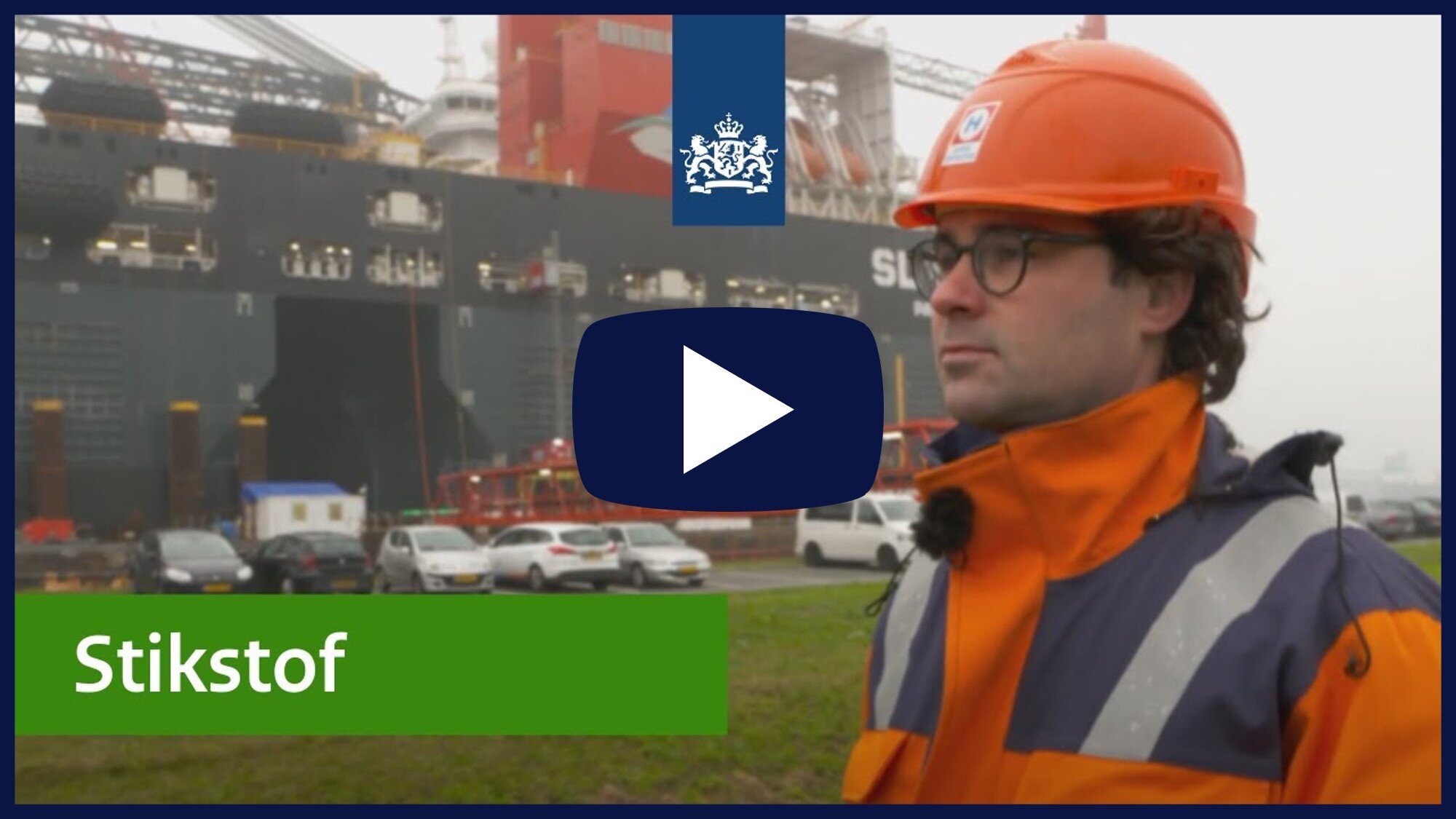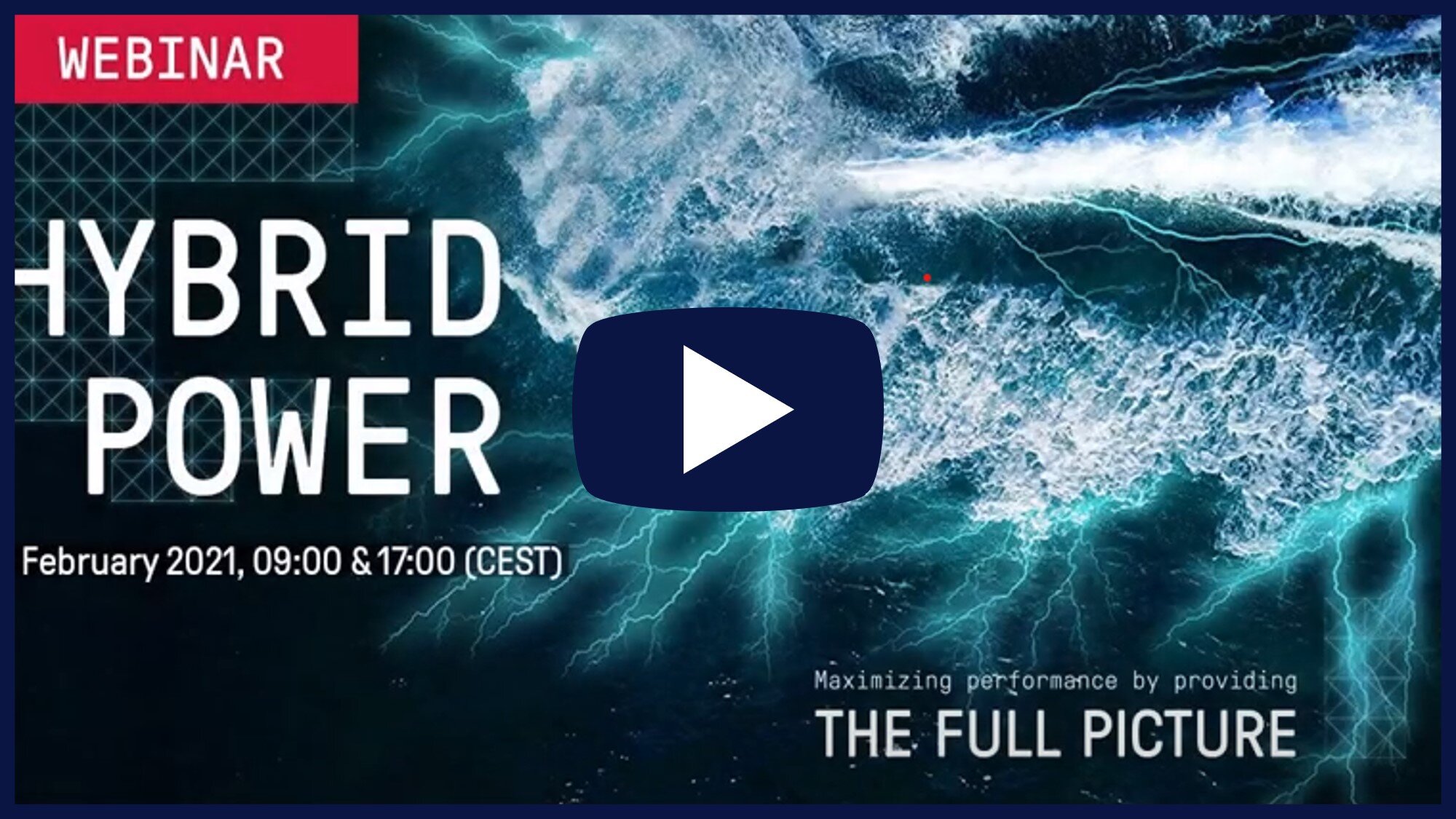Business case for a Feedermax containership with a shore power battery
A 12.5 MWh battery costing €2M can save ~ €50,000 per year for a 1,730 TEU containership
Shore power for containerships is mandatory from 2030 onwards as per FuelEU. The creation of shore power infrastructure remains difficult and takes a long time however. Mobile shore power solutions, with- or without a battery will ensure port authorities compliance to regulations.
This case study determines the business case of a mobile shore power battery (a ‘power barge’) for a 1,730 TEU containership (the CMA CGM Feedermax) in the Port of Rotterdam. It is assumed the average power demand is 329 kW, the maximum power rating is 1 MW, resulting in an LVSC system with two 20-ft container batteries tailor-made for this ship type. Multiple scenarios are considered and a sensitivity analysis is made for both ship and power barge. Key factors are average power demand and time at berth, which combined result in the battery size and impacts most of the CAPEX and OPEX parameters.
The annual costs savings for the ship with an electricity price of 0.40 EUR per kWh and 40 shore power days per year are in the order of €50k. Most cost reductions are due to reduced compliance cost: it is estimated more than €600,000 can be saved with FuelEU alone in the first 10 years. Conservative estimates for maintenance and EU ETS pricing are considered, which could result in a more positive case. Total CAPEX costs for refit of the ship are estimated at €900,000. Payback time with these CAPEX and savings are still well beyond 10 years, resulting in a non-viable business case when considered purely economically. Improvements to the business case can include reduction of CAPEX, reduced kWh price or a differing set of assumptions.
Use the tool below to customize a case study for yourself.
Ship - Technical
The technical goal for the shore power refit of the CMA CGM Feedermax is to provide all power while moored electrically, thereby eliminating the need for using the vessel's onboard generators, reducing emissions and fuel consumption. As such, the vessel will need to be able to receive the power onto its main switchboard at the right specifications before it can turn off its engines.
Average power demand for this ship type is determined using the Average Shore Power Demand tool. For this particular case study it is assumed one auxiliary engine operates at 30% load, resulting in an average power demand of 329 kW and energy demand of 8,482 kWh per day.
For the container ship setup, it is assumed that the shore power infrastructure is not available. This leads to the most conservative estimate in terms of technical and economic requirements, but can be considered somewhat ‘unfair’ as containerships need to be able to accomodate shore power by 2030 as per FuelEU requirements. Nonetheless for this instance the refit assumes necessary equipment modifications to be required and a connection system to integrate shore power is to be installed. The following breakdown covers the components required for connecting the ship to shore power and the key technical considerations.
-
The shore power connection panel, often part of the Cable Management System (CMS), serves as the interface between the vessel and the shore power system. It is positioned as close as possible to the main engine room or switchboard for ease of connection and safety.Key Specifications:
Location: Near the main switchboard or engine room, ideally on the starboard or portside, depending on operational requirements.
Compliance: Must adhere to IEC/IEEE 80005 standards for safety and integration.
Design: Galvanically separated from the shore distribution system for safety.
Voltage Protection: Must be checked to ensure proper voltage compatibility and galvanic protection for all equipment.
Considerations:
Proper placement is critical to avoid any unnecessary cabling and ensure easy access for maintenance.
For this refit is is assumed power is in the correct voltage and frequency of the vessel, i.e. 440 V and 60 Hz.
The shore power connection should be designed and tested in accordance with IEC/IEEE 80005 standards, including proper galvanic separation and grounding to prevent electrical hazards.
-
A transformer is required if the shore power voltage does not match the vessel’s electrical requirements. The transformer steps up or steps down the incoming voltage to align with the ship’s operational needs. For this particular case, the power barge provides power to the exact specifications required of the ship (440 V and 60 Hz). If that is not the case, or the connection will be made with HV specs (11kV for example) a transformer will be required. Equipment requirements would then be:Key Specifications:
Location: Installed close to the main switchboard to ensure both portside and starboard connections are served efficiently.
Power Rating: Typically sized to handle the vessel's total shore power demand (approx. 1MW in this example).
Compliance: Meets IEC/IEEE 80005 for safety and electrical integrity.
Considerations:
In case the transformer is required, ensure that it serves both sides of the vessel in case of 2 connection panels to avoid redundancy and inefficiency.
-
The main switchboard is the central hub for distributing electrical power on the vessel. It must be capable of handling incoming shore power while preventing overloads and ensuring a stable power supply. For this case study it is assumed no spare breakers are available and switchboard modifications thus need to be made. Contact your chief engineer and chief electrical engineer to discuss if this is indeed the case.Key Specifications:
Voltage: Incoming shore power should be 440V AC 60 Hz for this case.
Breakers: Additional breakers to be installed, potentially entire breaker cabinets.
Compliance: Meets IEC/IEEE 80005 for safe integration of shore power and protects the vessel's internal electrical system.
Considerations:
Verify with the chief engineer whether the current switchboard has spare breakers. If not, extensive modifications will be required.
Switchboard needs to be powered down during the retrofit, which could impact operations temporarily.
The switchboard should handle the maximum expected load from the shore power system and include protection features like overload protection.
Ship - Economical
For this case study it is assumed the shore power equipment needs to pay itself back by means of either fuel cost reduction, maintenance cost reduction, compliance cost reduction or a combination of all. This is not entirely fair, considering shore power will be made mandatory by 2030, which does not necessitate the requirement for a business case as it would simply be a necessity. Nonetheless, both a CAPEX and OPEX estimation were made, which resulted in a business case as shown below.
-
CAPEX costs are estimated at € 1M, but depend heavily on transformer, switchboard and refit requirements. -
OPEX savings for FuelEU Maritime alone are in the order of ~ €250,000 per year with a power demand of ~ 1 MW for ~ 60 days
Power Barge - Technical
The power barge serves as both a mobile shore power solution and an energy hub, designed to provide shore power to ships via batteries if needed. The system is structured around separate charging (incoming power) and discharging (outgoing power) systems, ensuring efficiency, reliability, and scalability. In other words, this provides modular conversion systems for both AC and DC power handling, which can be changed or swapped more easily if needed. This applies to the battery containers too, which are assumed to be CATL Tener-X battery packs. Furthermore it is assumed only containerships will be serviced, reducing the technical complexity as no dedicated cable management system is needed. Below is a detailed breakdown of the main components and their key parameters.
-
The barge serves as the floating infrastructure, housing all electrical and mechanical components and the battery system. With only 2 containers needed, plus the incoming and outgoing power equipment, the total footprint is limited, resulting in a ‘small barge’ of only 40m long by 5m wide.Hull Type: Flat-deck barge
Capacity: Designed to house power equipment and battery systems
Cooling & Ventilation: Integrated cooling for battery temperature management
Fire Protection: Multi-layer suppression system
-
This is where grid power is received to charge the batteries and safely distributed into the power conversion system. It is assumed this can be done under controlled situations at the quayside, resulting in minimum amount of equipment required.Voltage: 440V AC, 50 Hz
Connection standard: To be determined - IEC 80005-1 compliant or simple EU plugs
Protection Systems: Surge protection, residual current monitoring
Safety Features: Isolation monitoring and grounding system
-
The incoming power conversion system is responsible for transforming shore power (AC) into a regulated DC supply for charging the battery packs.AC-DC Rectifier
Converts 440V AC (50 Hz) to DC (1040-1500V)
Type: Active rectifier (IGBT-based for high efficiency)
Charging Power: 2.8 MW
Efficiency: ≥ 95%
DC-DC Converter
Regulates incoming DC voltage for battery safety
Voltage Range: 1040V - 1500V
Power Rating: 2.8 MW
-
The battery system stores energy from shore power and provides high-power discharge when needed.Key Specifications:
Model: CATL TENER-X
Total Capacity: 12.5 MWh (2x 6.25 MWh containers)
Energy Density: 430 Wh/L
Chemistry: Lithium Iron Phosphate (LFP)
Minimum State of Charge (SoC): 10%
Effective Usable Capacity: 11.25 MWh
Cooling System: Liquid-cooled 70kW unit
Fire Protection: Multi-level suppression
-
The discharging system converts stored DC power back to AC at the required ship frequency.DC-AC Inverter
Converts DC (1040-1500V) to 440V AC (60 Hz)
Type: IGBT-based inverter
Power Rating: 2.8 MW
Efficiency: ≥ 95%
Frequency Converter (if needed)
Ensures output is 60 Hz if the inverter does not handle it internally
Conversion: 50 Hz → 60 Hz
-
This is where power is transferred from the barge to the ship. As containerships carry their own Cable Management System (CMS), this could simply be a socket for the ship to be inserted into. The current design assumes it is handled by someone onboard who needs permission to go on the barge, or the operational party responsible for logistics needs to assist. This is to be determined.Voltage: 440V AC, 60 Hz
Connection Standard: IEC 80005-1 compliant
Power Delivery: Up to 2.8 MW
Protection Systems: Overvoltage, surge protection, and insulation monitoring
Power Barge - Economical
With current assumptions on the base case (66% uptime or 240 operational days per year, €0.10/kWh charging, €0.40/kWh selling, full CAPEX, no subsidies, and no rental revenue), the business case for a power barge is not economically viable. Additional cost reductions, subsidies, or alternate revenue streams are required to make it feasible. Several levers can be changed in order to improve the business case, elaborated upon below. A combination of several levers is most likely warranted.
-
The high upfront costs (CAPEX) of the batteries and infrastructure are a major barrier for investment. These ought to be lowered by several means, either using cheaper equipment (less conservative estimates) or the acquisition of subsidies. A 33% reduction of CAPEX reducing payback time from approximately 9 to 6 years.
-
Renting a barge avoids full CAPEX burden for the barge purchase, but the rental costs need to be balanced against the revenue. The business model most ensure that rental fees do not offset financial gains. With the current assumptions, there is no significant benefit of barge rental in terms of payback rate for the investment, only a reduction of initial CAPEX cost.
-
Taking on financing, i.e. a loan or lease, for example a 5-year loan at 8% interest, spreads out costs over time. This can improve cash flow and reduce CAPEX risk, but adds a financing burden, meaning profits must be high enough to compensate. The current assumptions show this interest rate will actually be detrimental to the business case in terms of both payback and maximum exposure.
-
Charging a €500/day rental fee significantly improves cash flow and is a major factor in covering operational costs. It needs further exploration, particularly whether a port authority, terminal owner or shipowner is willing to pay a fee or wants everything covered in the kWh costs. Adding rental revenues can decrease payback time from approximately 9 to 6 years.
-
Combining the most important levers into a single scenario yields results that allow for a payback period of less than three years, which is critical for the development of the first power barge and ensure investors’ needs are met. For that particular scenario, up to 40% of CAPEX costs must be covered and a rental fee of €500 per day included.
Members only
Premium tools and expert support at your fingertips
Don’t want to sign up? Check pay-per-use options














































Accurate estimation of shore power demand at EU ports has become essential due to strict regulations like AFIR, which requires electrification for 90% of port calls by container and passenger ships at TEN-T ports by 2030. This blog evaluates three methods—using EU MRV fuel data, Sustainable Ships’ ship-specific power database, and ICCT research—to estimate the Total Addressable Market (TAM) for shore power. Results show the total annual electricity demand across EU ports is between approximately 6 and 13 TWh, highlighting the significant scale of infrastructure investment ahead.